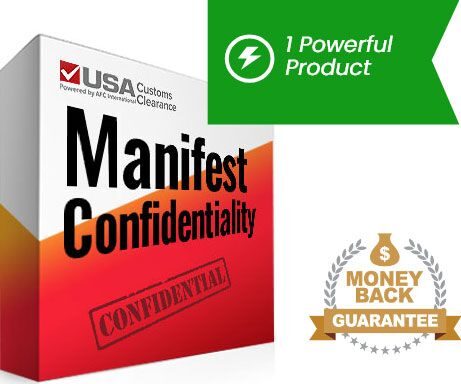
The Japanese car culture in the U.S. is red-hot, and knowing how to import car parts from Japan is more important than ever. However, getting JDM parts into the United States is not as easy as it looks.
Key takeaways:
Learn more about why car parts from Japan are so popular, what to look for, and how to easily import those parts to the U.S.
Auto parts from Japan currently face a 25% tariff. The U.S. and Japan are working towards a trade agreement that could lower this rate to 15%. However, this deal hasn't been made official as of yet. There are still ongoing negotiations taking place between the two countries.

During a consulting session, one of our Licensed Customs Brokers will help you calculate and pay the tariff on your Japanese auto parts.
In the U.S., about 50% of cars currently being purchased are imported, and the percentage of foreign made parts, even for American-made cars, is even higher. Japanese cars and their parts make up a significant portion of this due to their popularity (Toyota is actually the top-selling car brand).
Therefore, Japanese car parts are in high demand in the U.S., especially as the average vehicle age among owners continues to rise. If you want to import vehicle components, there are two markets you can use as source.
Of these two markets, Japanese aftermarket parts are more affordable. That said, both provide excellent components that will perform reliably once installed on a vehicle.
Importing certain automobile components from Japan is easier than others. Some parts have a sort of ‘red tape’ surrounding them. It doesn’t mean they are impossible to import, but they are more difficult to process through Customs.
The following are examples of used auto parts that may present problems:
The listed components cause issues in customs clearance is because they may have oil, lubricants, or gas remnants associated with them, which is a hazard in transport. Under Japanese customs controls, the shipment of any items containing said materials is prohibited.
For this reason, any Japanese used car parts in this category must be cleaned and sterilized, free from any liquid-based contaminants, before clearing Japanese customs. Clearance for these goods to be exported will not be granted otherwise.
Unfortunately, it’s not as easy as one might think. To successfully import car parts from Japan, many formalities must first be adhered to in the process. Success extends past those partnerships and goes right into laws and regulations.
Japanese car parts have been known for their affordability. Due to the popularity of JDM components, these auto parts have been competitively priced for years. In fact, prices for many Japanese car parts are often 50% to 70% cheaper than what can be found locally.
However, the 15% tariff being applied to parts will make importing foreign made automobile components more expensive, including those from Japan. As part of Section 232 tariffs, this should be applied in place of the 10% reciprocal tariff affecting most foreign trade partners, but still in addition to any general rates of duty according to the product’s Harmonized Tariff Schedule (HTS) code.
You’ll also have to take shipping costs and compliance fees into consideration when importing as well.
While importing car parts from Japan won’t be as cheap as it once was, the country is still a good place to source these components.
Related: Import Costs from Japan
The explosion of JDM styling and performance in the U.S. largely became popular due to various car culture action and street racing movie franchises. The popularity of the films has sparked an insane car culture and the demand that comes with it. To show how many car parts the U.S. has imported from Japan, consider the data we’ve provided.

So many people have bought into the JDM car culture, with more and more buying such cars each year. With the increase in Japanese vehicle ownership, comes a demand for genuine JDM parts.
The imported aftermarket parts industry has also been growing annually, no doubt as a result of the incredible demand from consumers. Now more than ever, the business of importing these goods from Japan is at its peak.
However, this was not always the case. In past years, Japan was not as open to dealing with foreign importers due to fraud and other forms of bad business practices. If you are targeting aftermarket parts or import, careful vetting of suppliers is recommended.
Both documentation and compliance are critically important when importing goods from Japan.
Federal conformity related to imported car parts from Japan is critical. You must understand U.S. conformity and compliance standards if you are to be successful in facilitating these parts overseas.
Necessary documentation that upholds conformity and compliance for importing goods:
As with anything that is being exported out of a foreign country and subsequently imported into the U.S., a litany of regulations and conformity is required. Regardless of anything else, these topics related to customs are the most essential piece of the puzzle.
The National Highway Traffic Safety Administration (NHTSA) has numerous regulations you’ll need to complete when importing car parts from Japan.
First, you’ll need to provide a DOT HS-7 form. At the top this document, fill in some basic information about the parts you’re importing. After providing this information, check off one of the 14 declarations on the document that most describes your components.
Once you’ve completed the form, you’ll have to give four important data elements.
This includes:
A Department of Transportation (DOT) symbol must appear on the imported Japanese auto part, either on the part itself, or on the container it’s transported in. Part numbers should appear on the Japanese vehicle components you import.
All automotive components will need manufacturer information as well. This includes the name of the manufacturer who made the parts and their address. Finally, a compliance statement from the manufacturer that confirms the components abide by FMVSS requirements should appear.
You’ll need to follow regulations set by the Environmental Protection Agency (EPA) if you’re importing an engine or engine-related components from Japan. First, obtain a Form 3520-1 that be used to record information about your parts.
If you’re importing a Japanese vehicle engine, you’ll most likely need to declare code E on the form. This indicates that your engine complies with the EPA’s requirements. There are an assortment of other codes that can apply to engines and engine-related parts as well. For more guidance, reach out to one of our Licensed Customs Brokers.

One of our Licensed Customs Brokers can help you with EPA and other federal regulations when you import Japanese car parts.
The Harmonized Tariff Schedule (HTS) is a code that represents the goods that you are importing into the U.S. This code lists the assigned duty rate of the imported auto parts. Our site has an HTS Lookup Tool that you can use to find your classification.
As part of the trade agreement between Japan and the U.S., there has been an elimination and reduction of some tariffs traveling both ways but in light of new tariffs these should be confirmed by a licensed customs broker.
Example HTS Codes for auto parts being imported from Japan:
These HTS codes help an importer calculate the costs of associated duties concerning their imported goods. Finding the correct code assigned to each component you are importing is critical.
Another critically important asset for importers is something known as Incoterms®. These were created by the International Chamber of Commerce (ICC) to help facilitate communication.
They create direct agreements that both sides of an international transaction can understand, while also dictating the rules and responsibilities for both parties.
Related: The Best Incoterms for Importers
When importing Japanese car parts into the U.S., you will likely require consulting to help answer questions regarding even the smallest detail.
Consulting services for Japanese imports are essential because something can get missed regardless of your experience in international trade. In other cases, a potential opportunity to save time and money can pass you by if you’re not careful.
Expert consultation takes the frustration and confusion out of importing Here are some example topics covered by our expert consultants:
Besides consulting, customs brokerage takes things one step further. A customs broker effectively manages every aspect of the import process for you. They provide a litany of services that get your goods to the U.S. safely and quickly.
Most importantly, customs brokers are assets for avoiding unnecessary fines, additional fees, or even goods seizure due to an error on the part of the importer.
With a customs broker at your side, details won’t be missed, and your importing experience will be streamlined and satisfying. Even obtaining consultation is recommended at the bare minimum when dealing with importing goods from Japan.
Knowing how to import car parts from Japan can be tricky. This trickiness remains true with JDM and aftermarket parts and accessories. Our team at USA Customs Clearance is experienced and utterly committed to helping you.
Our consultants and licensed customs brokers have decades of combined experience and know how to get your goods out of Japan and into the U.S. with ease. USA Customs Clearance, leverages skill and care to help facilitate your needs for every shipment.
With a wide range of services and support, our team is here to help!
Get the import support you require today from USA Customs Clearance. Start with one of our services, or call our team at (855) 912-0406 if you have questions. You can also reach out to us from our contact page.

Your Shipping Manifest is Public and Available To Your Competitors.
Purchase Your Manifest Confidentiality and Protect Your Business!
 Copy URL to Clipboard
Copy URL to Clipboard
Good day,
My name is Ester from Namibia.
I would like to start a business of selling car parts.please advice.
I would love to purchase some Pontiac trans am parts from Japan tail lights from a 79thru 81 export tail lights for 93thru97firebird export and mirrors from 82_97both export
Hi my name is nols from south africa i need honda luxlune 180 E 1991 engine harnash complete